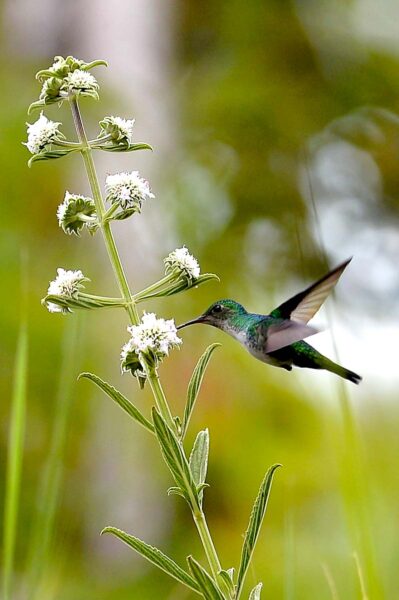The Canal and the Sustainable Development Goals
In September 2015, the United Nations General Assembly approved the 2030 Agenda for Sustainable Development, setting forth 17 goals to […]
In September 2015, the United Nations General Assembly approved the 2030 Agenda for Sustainable Development, setting forth 17 goals to eradicate poverty, protect the environment, address climate change, among others. It is a global action plan to promote the well-being of people and the planet.
As part of this global alliance, the Panama Canal has a strategy based on three pillars: fulfill its responsibility to manage and conserve the watershed’s water resources; operate the Canal efficiently; and protect the environment, promoting sustainable development. In this way, the interoceanic waterway is aligned with efforts to achieve the Sustainable Development Goals (SDGs).
Clean water and sanitation
Ensuring the availability of water, its sustainable management and sanitation for all is Goal 6 of the SDGs.
By constitutional mandate, the Panama Canal is responsible for the administration, maintenance, use, and conservation of the water resources of the Canal Watershed, which is essential for the supply of drinking water to two million people and for the continuous and efficient operation of the Canal.
The efficient management of the water resource is not only the result of the work of a team of committed Canal operators, but also of the efforts and contributions of a community that strives to preserve its environment through permanent actions of environmental education, community strengthening, better production practices, and the execution of conservation and sustainable development programs and projects.
In terms of sanitation, the Canal has ten wastewater treatment plants in operation and three under construction, which are necessary to preserve the quality of the water resource. The plants comply with Panama’s environmental standards, which regulate the discharge of wastewater into bodies of water.
Climate action
SDG 13 calls for urgent action to combat climate change and its effects.
In 2013, the Panama Canal began measuring its carbon footprint to align its activities with the goal of reducing emissions, thus mitigating climate change. In 2017, it organized the first steps towards becoming carbon neutral with the launch of its Emissions Calculator, a tool that not only allows users to measure their greenhouse gas (GHG) emissions when using the route, but also to strengthen the Canal’s analysis of the emissions produced by its daily operations.
In this way, the Panama Canal contributed to the reduction of more than 13 million tons of CO2 equivalent in 2020 by offering a shorter route for ships.
On April 22, 2021, the Panama Canal signed the Declaration of “The First 50 Carbon-Neutral Organizations,” an initiative led by Panama’s Ministry of Environment (MiAmbiente), aimed at integrating efforts to accelerate climate and measurable actions to achieve carbon neutrality by 2050, although the Canal has set a goal of achieving it before the end of this decade.
Affordable and clean energy
Ensuring access to reliable, sustainable and modern energy for all is SDG 7.
The Panama Canal contemplates the adaptation of electricity generation processes, favoring the use of photovoltaic plants, hydropower and other types of energy that need to be studied in more detail, while ensuring that all facilities and projects are adapted to be supplied with the new systems that are developed.
With the support of the Inter-American Development Bank (IDB), the Sustainable Development and Decarbonization Strategy “Green Route 2050” is being prepared and will be ready in the coming months, with the participation of all stakeholders and a roadmap that will allow us to articulate the actions to implement the strategy as a key element.

Protection of terrestrial ecosystems
To protect, restore and promote the sustainable use of terrestrial ecosystems, sustainably manage forests, combat desertification, halt and reverse land degradation, and halt the loss of biological diversity, is Sustainable Development Goal No. 15.
In this area, the Panama Canal has alliances with governmental entities such as MiAmbiente, MIDA and IDIAP and with the communities in the watershed, to ensure the sustainable use of the area’s natural resources, improving the quality of life of the residents. Through the Environmental Economic Incentives Program (PIEA), benefits are provided to local farmers, starting with land titles and training in agroforestry techniques that allow them to develop, reforest and protect the watershed, while generating economic alternatives for the residents.
Thanks to the PIEA and the support of the communities, 8,355 hectares have been reforested by the end of 2020 in the watershed, and 2,000 hectares have been incorporated into the forest protection modality.
In terms of biodiversity, the Canal watershed is a rich territory, with some 6,500 species of plants; 500 species of birds, including 25 protected species; 160 species of wild mammals and 125 species of reptiles, all in an area 57% covered by mature and secondary forests.
With these and other initiatives, such as the program to reduce the speed of ships to minimize the risk of colliding with cetaceans, aligned with SDG No. 14, which speaks of the conservation of oceans, seas and marine resources, the Panama Canal is taking firm steps towards the path of sustainability and places itself on a par with large companies worldwide, setting an example for the international maritime industry.